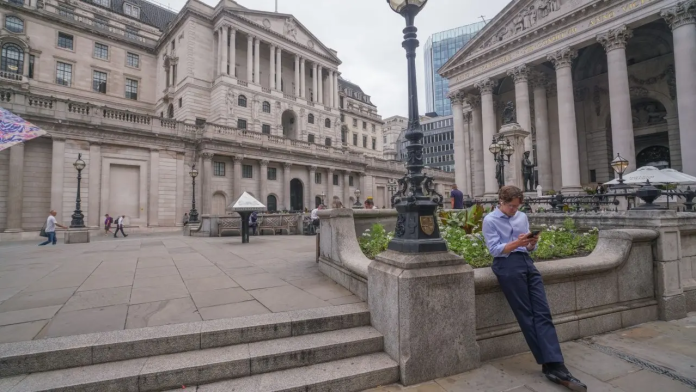The Bank of England (BoE) confronts a complex policy balancing act this week as it prepares to likely reduce interest rates from 4.25% to 4% on 7 August, Reuters reports.
Financial markets widely anticipate a 0.25 percentage point cut on Thursday, lowering the benchmark rate to 4%, with another reduction expected before year-end. This comes despite June’s consumer price inflation rising to 3.6%, significantly above the central bank’s 2% target and markedly higher than both the eurozone and United States.
The decision unfolds against a backdrop of conflicting economic signals: persistent domestic price pressures, weakening growth, and the sharpest private-sector job cuts since the 2008-09 financial crisis excluding the pandemic period.
Britain’s inflation challenge remains distinct among major economies. After peaking at 11.1% in 2022, driven heavily by the country’s reliance on natural gas imports following the outbreak of war in Ukraine, inflation had fallen to 1.7% by September 2024. However, its subsequent resurgence outpaced comparable economies, with the Bank’s May projections indicating a return to target only by early 2027.
The situation has been exacerbated by deeply embedded domestic pressures. Services inflation, closely tied to labour costs, and core CPI (excluding volatile components) have remained stubbornly elevated compared to headline figures. Food and drink inflation, acutely felt by lower-income households, has also accelerated rapidly, amplifying public discontent.
The Citi/YouGov measure of long-term expectations now approaches its highest since late 2022, while the Bank’s own survey shows expectations at their most elevated since 2019.
While private-sector regular wage growth has moderated from its 8% peak two years ago to just under 5% annually, it remains approximately two percentage points above pre-pandemic levels. Most Monetary Policy Committee (MPC) members consider 3% wage growth consistent with the inflation target, yet the path toward this equilibrium appears uncertain.
Simultaneously, July’s flash Purchasing Managers’ Index (PMI) data revealed businesses are shedding staff at a pace signalling approximately 50,000 private-sector job losses monthly, the most severe sustained contraction since the global financial crisis outside the pandemic.
The services sector, representing over 80% of UK economic output, expanded at its slowest pace in seven months during July, with new orders falling sharply.
With the composite PMI indicating a mere 0.1% quarterly GDP growth rate and downside risks mounting, Bank of England doves argue the economic slowdown will naturally curb inflation. Meanwhile, hawks may want to see more evidence that the recent rise in price pressures, which companies often attribute to the April budget measures, is temporary before they decide to cut rates further.
